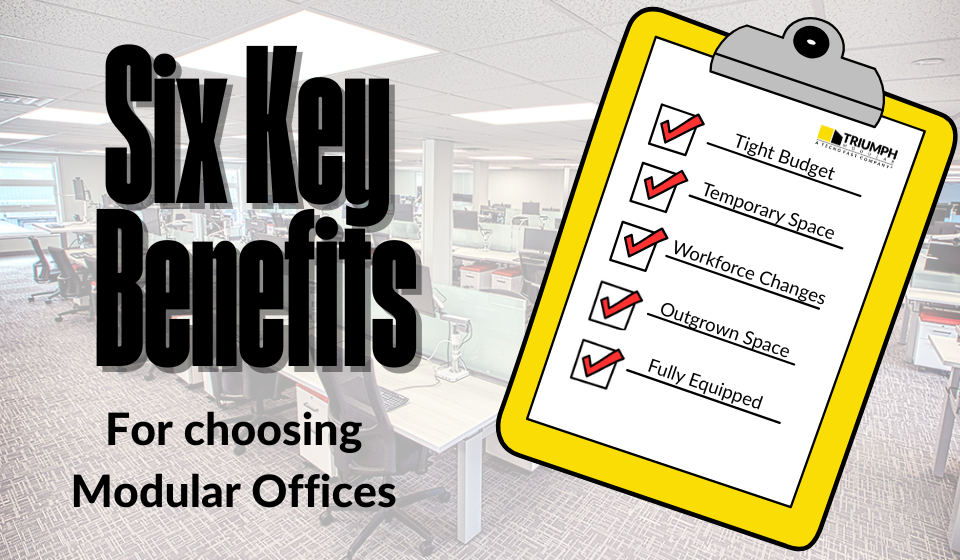Why are schools shifting to modular construction? This approach provides a faster, less disruptive path to building expansions and upgrades. This guide examines the reasons why schools are making this shift and the prospective advancements in this smart construction strategy.
Key Takeaways
- Modular construction for schools offers a rapid, versatile, and cost-effective building solution. It accommodates the need for quick expansion or renovation with minimal disruption to educational programs.
- Modular school buildings can be tailored to specific educational needs, provide significant time savings and sustainability advantages over traditional construction, and are built with precision that ensures safety and longevity.
- Future trends in modular school construction include technological advancements for smart systems and energy efficiency, design innovations for adaptive learning spaces, and potential increases in governmental support due to recognized benefits.
Introduction to Modular Construction:
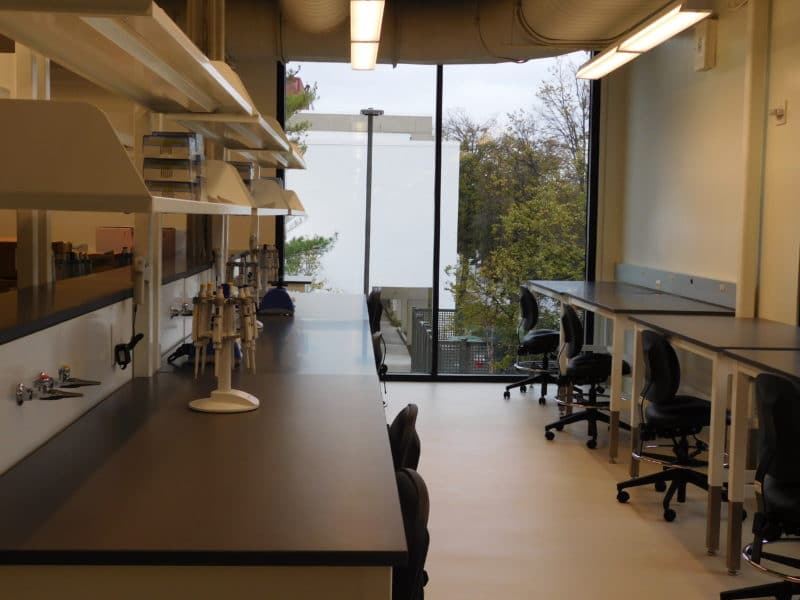
Modular construction, a game-changer in the building industry, involves creating structures off-site in controlled factory settings. This innovative approach uses the same high-quality materials and adheres to the same stringent codes and standards as traditional construction but in a fraction of the time. Once completed, these modules are transported to the site and assembled into a finished building. This method is transforming the way educational facilities are built, offering unmatched efficiency, precision, and customization.
For the education sector, modular construction is particularly advantageous. It allows for rapid, cost-effective expansion or renovation of school buildings, minimizing disruptions and reducing the lengthy timelines typical of on-site construction. Schools can quickly add new classrooms, laboratories, or even entire facilities without the hassles of traditional building methods.
Also, the flexibility of modular units enables educational institutions to easily adapt to changing needs. Whether accommodating fluctuating student enrollments,renovating or relocating buildings, modular construction provides a versatile solution that keeps pace with the dynamic demands of the education sector.
Advantages of Modular Construction for Schools:
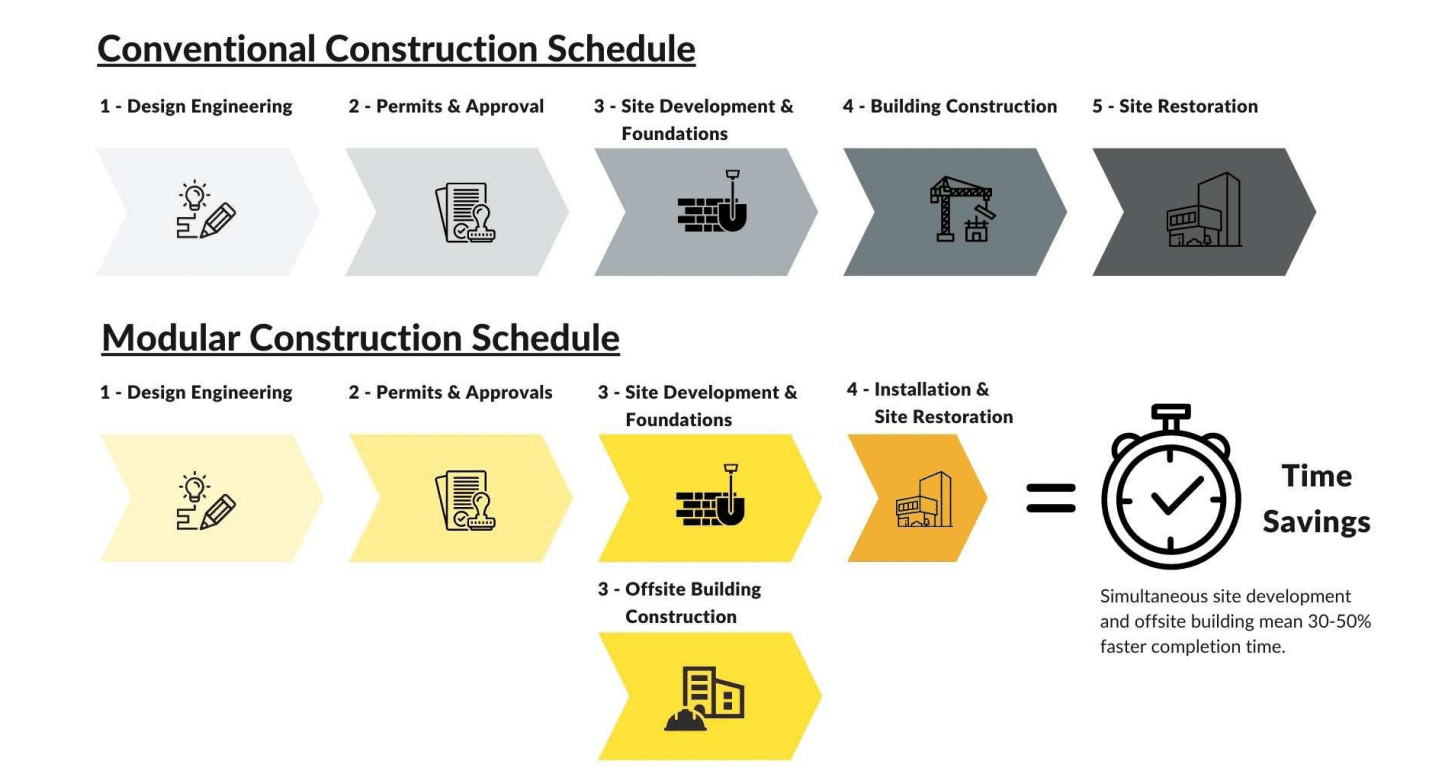
Modular buildings excel in terms of construction timelines, with projects typically completed in about half the time required for conventional buildings. This rapid turnaround minimizes disruptions to the school schedule, allowing educational programs to continue with minimal interruption. Moreover, these structures are not only swiftly erected but also built with a level of precision and quality control that is hard to achieve on traditional construction sites. Each modular unit meets the highest standards of safety and durability.
Flexibility and scalability are key features of modular construction. As educational needs evolve, modular buildings can be easily expanded, reconfigured, or even relocated, providing schools with an adaptable infrastructure that can grow and change without the need for new permanent construction. Furthermore, the modular approach is inherently sustainable, generating less waste and reducing energy consumption compared to traditional methods, which aligns with the growing emphasis on environmental responsibility in the educational sector.
Limiting site disruption is significant for schools—learning environments disrupted by loud noise, restricted areas, and construction equipment create a distracting environment for students and staff. That’s why many schools and educational institutions turn to modular for any upgrades, additions, or building replacements.
Case Study 1: Andover, Massachusetts
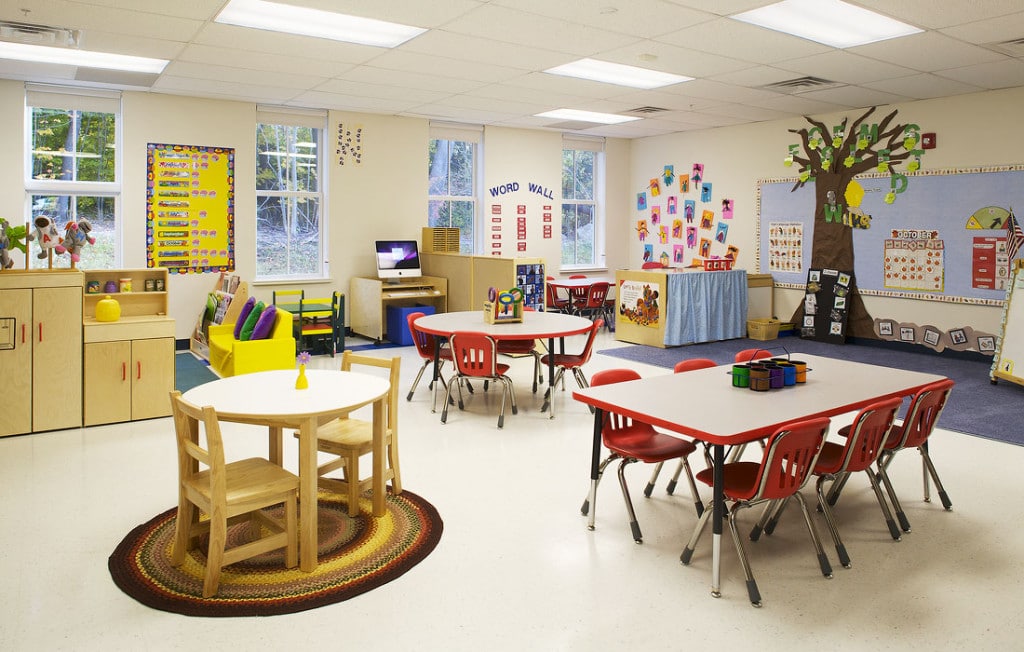
The North Andover Early Childhood Center in Massachusetts stands as a testament to the efficacy of modular construction. Faced with the urgent need to expand its preschool program, the center chose a modular solution, resulting in a fully functional 13,000-square-foot facility in just six months. This impressive timeframe, from conception to opening, highlights the unmatched speed of modular construction while meeting the growing demand for educational spaces..
The project was swift and customized to the specific needs of young learners. The modular classrooms included features such as smaller toilets for preschoolers and sustainable elements like white roofing and energy recovery ventilators, contributing to a healthier learning environment. Marylou Connors, the Preschool Coordinator, praised the new facility for its high quality and attention to detail, emphasizing how modular buildings can deliver tailored solutions that enhance the educational experience.
“It has been very exciting for us to watch the building come together so quickly,” said Connors. “I feel like we have the luckiest little preschoolers in the world to have such a beautiful new school with everything built just for them. Triumph has been unbelievable through this whole process by making sure that our students have only the very best. We are all extremely proud of our new home.”
Project URL: https://www.triumphmodular.com/project/north-andover-early-childhood-center/
Case Study 2: Parkhurst Elementary School, Massachusetts
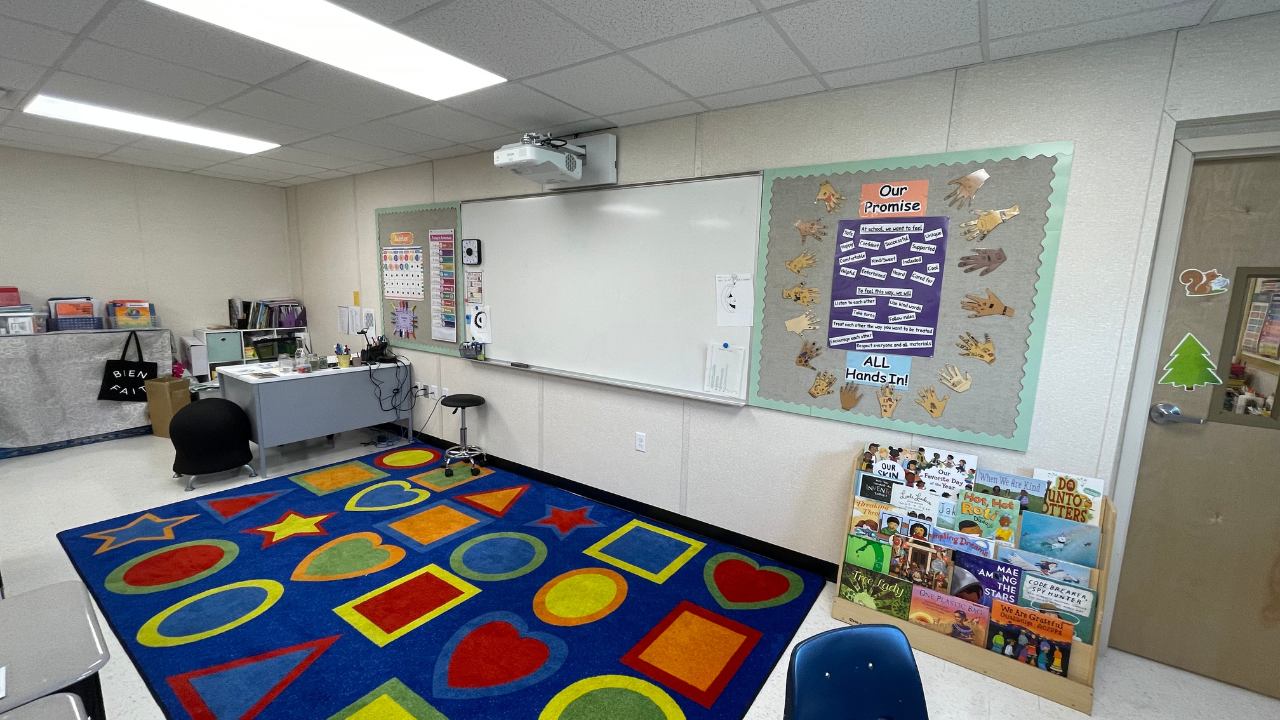
Winchester Public Schools faced a unique challenge when renovations at Lynch Elementary School required the temporary relocation of its students. Rising to the occasion, Parkhurst Elementary School implemented a 13,074-square-foot modular expansion designed to accommodate these students without disrupting their education. This addition, which included 15 modern modular units, showcases the ability of modular construction to meet urgent educational needs swiftly and effectively.
The modular classrooms were outfitted with state-of-the-art amenities such as motion-sensing lights and tech installation conduits, ensuring that the temporary facilities maintained high standards of quality and functionality. Additionally, thoughtful design elements like faculty restrooms and multi-stall bathrooms for students were incorporated to create a comfortable and conducive learning environment. The project’s success, completed on time and within budget despite weather challenges and site constraints, is a testament to the collaborative efforts of Triumph Modular, town administrators, and the community.
Project URL: https://www.triumphmodular.com/project/parkhurst-elementary-school/
Case Study 3: Boston Public Schools, Massachusetts
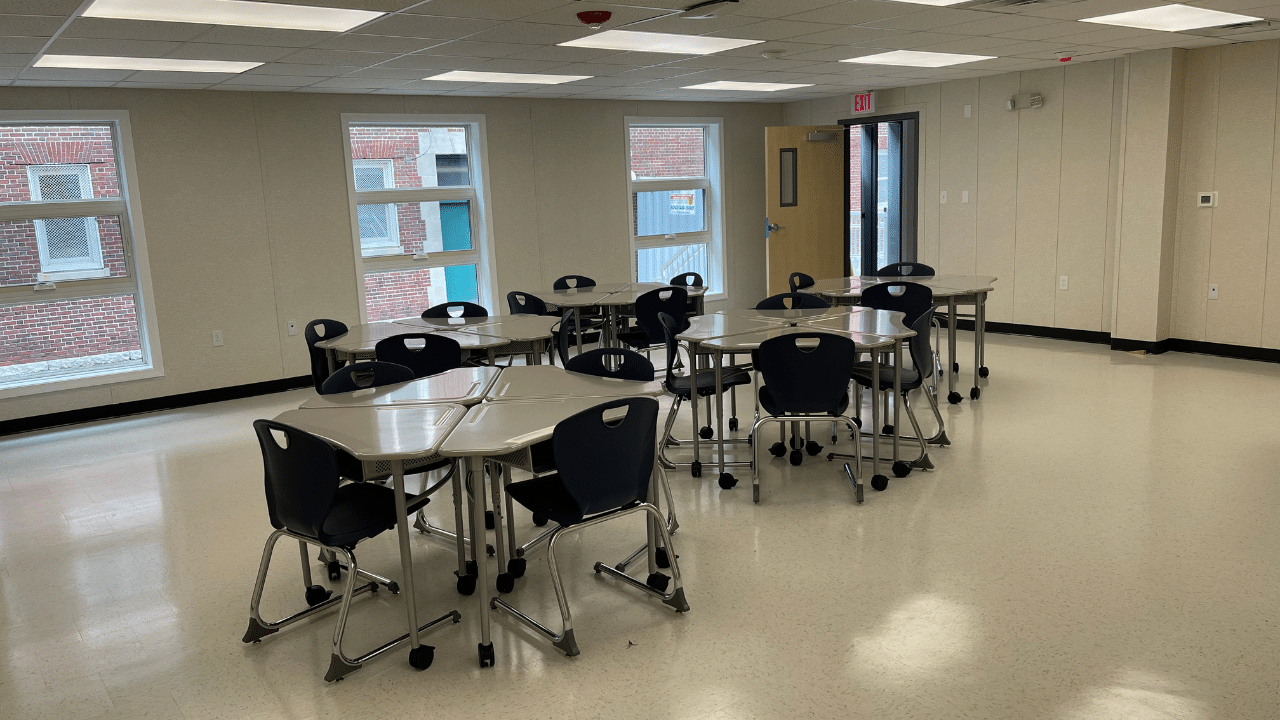
The Boston Public School system has been a long-time partner of Triumph Modular. For the 2022-2023 school year, three elementary schools faced a space shortage due to growing student populations. Winning this bid allowed us to once again demonstrate our expertise in timing and installation logistics..
During the spring of 2022, Triumph Modular was busy renovating previously used units at Williams College. Each building was redesigned to meet the specific needs of Boston Public Schools, including replacing walls, doors, and flooring, as well as updating HVAC units. The off-site construction advantage of the modular building allowed the school year to continue uninterrupted, free from the typical noise and machinery associated with traditional construction sites.
Site work at each school began in June, following the end of the school year. Located in densely populated residential areas around Boston, each school posed unique delivery challenges. The schoolyards serve as community spaces during non-school hours, requiring careful consideration to maintain neighborhood access. Detailed logistic planning took place well before our first building delivery in July. Each classroom was delivered and set in one day, allowing ample time to install ramps, connect the buildings to electricity, and clean up the surrounding landscape.
The project faced several challenges and required innovative solutions. For instance, the entrance at Bates School was too narrow for delivery, so we craned the classrooms in from the parking lot. Additionally, Bates School’s existing electrical infrastructure couldn’t support the three units that needed power, prompting the installation of a new transformer. At Grew School, the entrance was blocked on delivery day, necessitating the use of a crane to install the classrooms. Similarly, Chittick School had a narrow entrance like Bates, but our expert drivers maneuvered the tight space to place the buildings in the center playground area.
School was too narrow for delivery, so we craned the classrooms in from the parking lot. Additionally, Bates School’s existing electrical infrastructure couldn’t support the three units that needed power, prompting the installation of a new transformer. At Grew School, the entrance was blocked on delivery day, necessitating the use of a crane to install the classrooms. Similarly, Chittick School had a narrow entrance like Bates, but our expert drivers maneuvered the tight space to place the buildings in the center playground area.
The results were impressive: minimal site disruption at each school, three classroom additions delivered on schedule, and classrooms ready for the start of the school year. We also provided the flexibility of a lease extension beyond the initial three years. Triumph Modular’s ability to adapt and deliver high-quality educational spaces ensures that students have a conducive learning environment, regardless of the challenges faced.
Project URL: https://www.triumphmodular.com/project/boston-public-schools-multi-site-school-additions/
Technical and Safety Considerations:
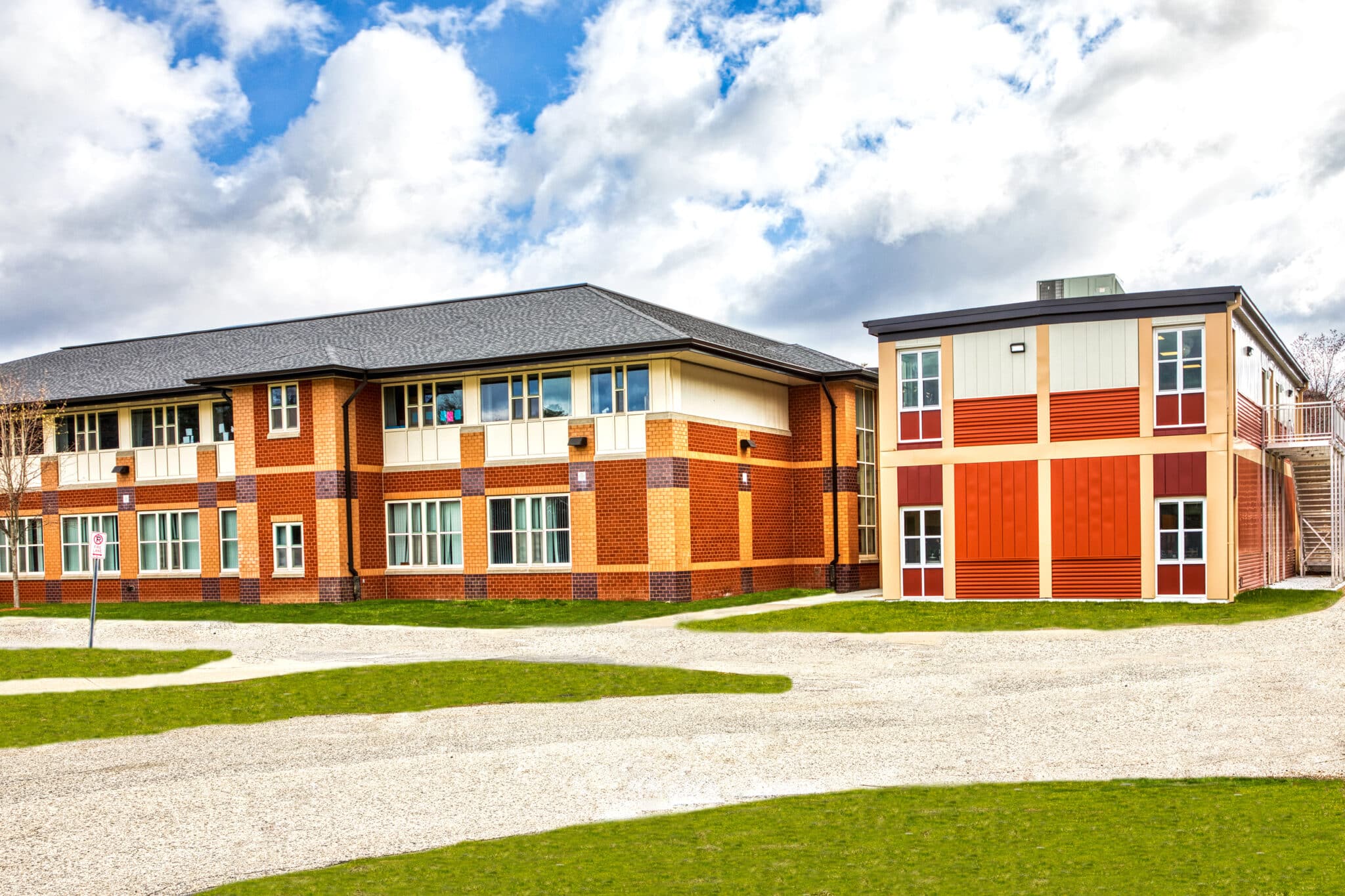
When it comes to constructing educational facilities, the overall safety and durability of the building are paramount. Modular construction excels in these areas, utilizing robust materials and engineering practices that ensure the longevity of the structure. These buildings are designed to withstand the rigors of transportation and installation, demonstrating the same, if not greater, resilience as site-built constructions when facing environmental stresses.
Triumph Modular is committed to upholding the highest safety standards, and meeting or exceeding all local regulations for educational buildings. This includes stringent fire safety protocols, structural integrity checks, and adherence to accessibility requirements, ensuring that modular buildings are not only safe but also welcoming to all students and staff. The quality control measures implemented throughout the manufacturing and assembly process guarantee that each module meets the exact specifications and quality expectations before it ever reaches the school site.
Compliance with local building codes, educational facility requirements, and environmental regulations is another cornerstone of modular construction. These buildings are engineered to align with specific educational needs and are subject to the same inspections and approvals as conventionally built facilities, ensuring they provide a safe and effective learning environment for students.
Future Trends in Modular School Construction:
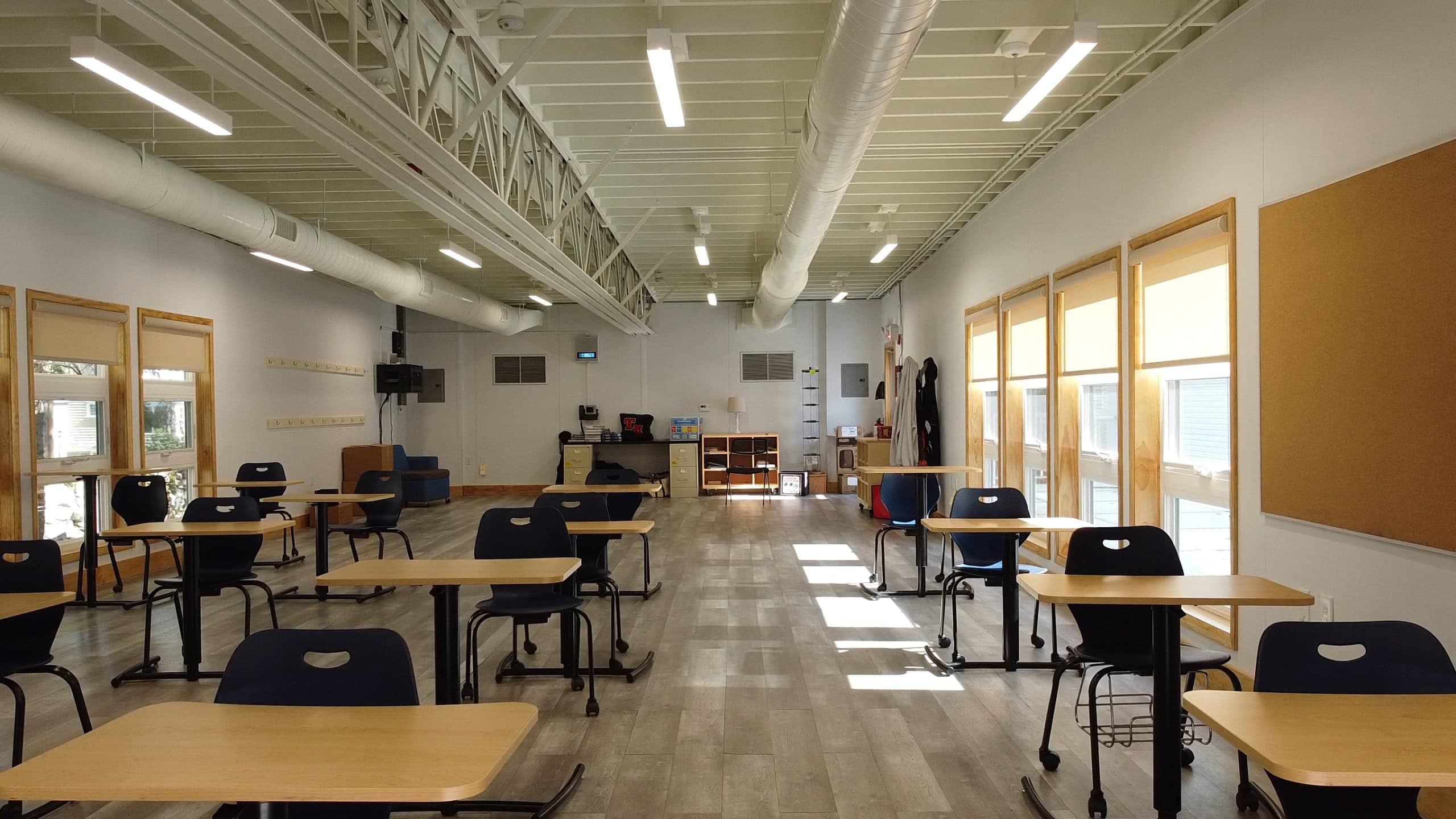
As we look to the future of educational infrastructure, modular construction stands at the forefront of innovation. Technological advancements are set to play a major role in this field, with smart building systems, energy-efficient designs, and the use of sustainable materials becoming increasingly prevalent. These developments promise to enhance the functionality and comfort of modular school buildings, making them even more attractive to educational institutions.
Design innovations are also shaping the trajectory of modular school construction. With a focus on creating spaces that are both aesthetically pleasing and highly functional, architects and modular companies are exploring new ways to tailor these buildings to the specific needs of schools and their communities. This includes modular classrooms that can adapt to different teaching styles and learning activities, as well as communal areas that foster collaboration and engagement.
Policy changes and funding opportunities are likely to have a significant impact on the adoption of modular construction in the educational sector. As governments and organizations recognize the benefits of modular buildings—such as reduced construction time, cost savings, and environmental sustainability—support for these projects could increase, paving the way for more schools to embrace this innovative construction method.
Get More Information:
Imagine an educational environment that is not only cost-effective and rapidly constructed but also meets the highest standards of sustainability and student well-being. Modular construction makes this vision a reality, cutting down on energy usage and waste while providing top-notch learning spaces for future generations. If your school or district is grappling with expanding student populations, aging facilities, or a commitment to greener buildings, now is the perfect time to explore modular solutions.
Triumph Modular is leading the charge in this transformative industry, ready to help you create a high-quality, sustainable educational facility tailored to your specific needs. We provide:
- Comprehensive information about our services and capabilities
- Custom quotes for your project
- Downloadable guides and resources
- Detailed project portfolios showcasing our previous work
Contact us today to learn more and let us help you make a significant impact on your educational community by delivering a modular building that exceeds expectations.
Frequently Asked Questions
How does modular construction save time and money for schools?
Modular construction saves schools time and money when compared to traditional construction. Estimates suggest modular construction can save school districts up to 30% compared to traditional methods. These savings can then be redirected toward educational resources and improving technology or staff development. Source:
Are modular school buildings safe and durable?
Yes, modular school buildings are safe and durable. They are constructed with robust materials and engineering practices to meet or exceed safety standards. Their design ensures durability, and due to controlled construction conditions, they often withstand environmental stresses better.
Can modular buildings be customized for specific educational needs?
Yes, modular buildings can be customized to meet specific educational needs, offering tailored design, custom classroom sizes, specialized facilities, and modern amenities.
What sustainable features do modular school buildings offer?
Modular school buildings offer sustainable features such as energy-efficient design, recyclable materials, and reduced construction waste, making them an environmentally friendly choice for educational facilities.
How does modular construction impact the learning environment?
Modular construction positively impacts the learning environment by providing high-quality, healthy, and flexible spaces that can adapt to changing educational needs. The rapid construction process also minimizes disruption to school operations, allowing for a better, uninterrupted educational experience.
Check out our Educational Sector page for more information.




